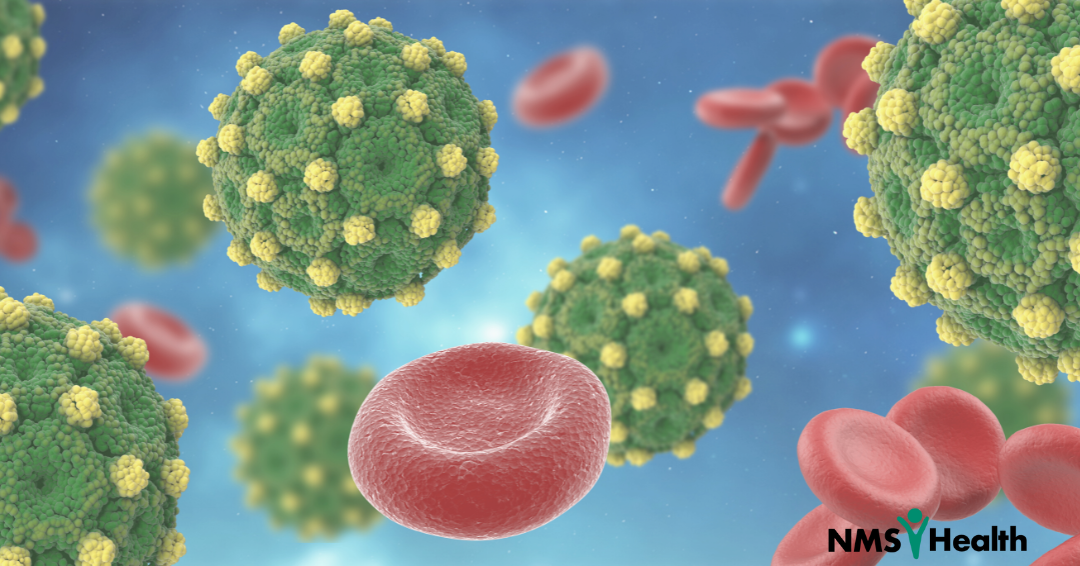Bloodborne pathogen exposure is a serious risk in a variety of workplaces. When thinking about bloodborne pathogens, healthcare professionals, first-responders, and housekeeping staff may first come to mind but employees in a variety of industries may be at risk. Any employee who cleans up the work space or administers first-aid may be exposed to bloodborne pathogens. Approximately three million exposures to bloodborne pathogens occur annually. Consequently, in workplaces or laboratories, bloodborne infections are often due to accidental punctures. It is estimated that 400,000 needle or sharp injuries per year occur in hospital settings nationally.
What is a bloodborne pathogen?
Bloodborne pathogens are disease-causing microorganisms present in human blood and other bodily fluids. Blood borne pathogens can be transmitted by blood and other potentially infectious materials such as,
- blood
- blood serum
- vaginal secretions
- semen
- cerebrospinal fluid
- pleural, peritoneal, and other joint capsule or organ fluids
- amniotic fluid
What are the types of bloodborne pathogens?
Of the more than 20 bloodborne pathogens, three are the most common pathogens of concern when discussing occupational exposure:
- Hepatitis B (HBV) – A liver infection caused by the Hepatitis B virus which can lead to chronic liver disease.
- Hepatitis C (HCV) – A liver infection caused by the Hepatitis C virus which can lead to chronic infection.
- Human Immunodeficiency Virus (HIV) – A virus that attacks the immune system and if untreated, can lead to AIDS.
What is the OSHA bloodborne pathogens exposure standard?
The Occupational Safety and Health Administration (OSHA) published the first bloodborne pathogen standard in 1991. The standard was devised to protect workers from the risk of exposure to these pathogens. OSHA revised the standard with the Needlestick Safety and Prevention Act of 2000.
The OSHA bloodborne pathogens standard makes it mandatory for employers to:
- Create a written “Exposure Control Plan” that’s updated each year.
- Enforce the use of universal (standard) protocol.
- Ensure the use of engineering precautions, including the operation of effective, safe medical equipment like sharps disposal bins, self-sheathing needles, and needleless operations.
- Make sure that work practices are performed to minimize exposure, such as proper practices for handling and discarding laundry and sanitizing infectious surfaces.
- Provide individual protective equipment like eye protection, gloves, gowns, and masks.
- Provide free hepatitis B vaccinations to workers within 10 days of assignment.
- Provide free post-exposure exams per the CDC guidelines after any occupational exposure accident for employees.
- Educate employees about hazards via bloodborne pathogen training, signage, and labels.
- Document injuries and maintain the medical records for injured employees.
With the Needlestick Safety and Prevention Act of 2000, OSHA issues a revised bloodborne pathogens standard which detailed additional requirements, including:
- Maintaining a sharps injury log.
- Documenting non-managerial workers for ID, evaluation, and selection of devices.
- Expanded terms and definitions of engineering controls.
- Ensuring that exposure control protocols included changes in technology that minimize exposure to bloodborne pathogens.
How to stop the spread of bloodborne pathogens
Bloodborne pathogens are spread primarily through two types of transmission: direct and indirect contact. With direct contact the infected blood or bodily fluid enters another person’s body directly, such as infected blood splashing into an eye. Indirect contact happens when infected blood or fluid enters another person’s body by way of another object, such as needlestick.
The first step to halting the spread of bloodborne pathogens is to have a universal procedure in place. Whether employees encounter blood as an occupational hazard or through coincidence, it should be treated with extreme caution. All blood should be treated as if they contain bloodborne pathogens.
Additionally, employees should avoid direct or indirect contact with others blood when possible. In instances where that is not possible, employers should outfit at-risk employees should be with appropriate PPE. Appropriate PPE includes disposable gloves, masks, eye protection, face shields, and gowns.
Employers must ensure that designated sharps containers are used and must label hazardous items/areas. Additionally, they must offer the hepatitis B vaccine to their employees.
How to manage bloodborne pathogen exposure
Unfortunately, even with mitigation and prevention controls in place, accidental exposures can still happen. It is important to act quickly if an employee is exposed. After an accidental needle stick, the area should be washed thoroughly with soap and water. Splashes to the nose, mouth, or skin should be flushed with copious amounts of water. If the fluid comes in contact with the eyes, they should be irrigated with sterile water or saline for twenty minutes.
After cleaning the area thoroughly, employees should seek prompt medical attention. Any incident must be documented and reported according to the workplace’s exposure control plan. OSHA requires employers to offer post-exposure evaluation and follow-up appointments to their at-risk employees at no cost.


